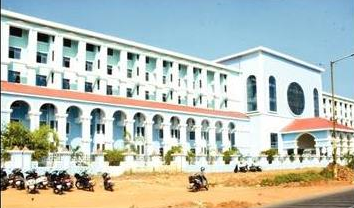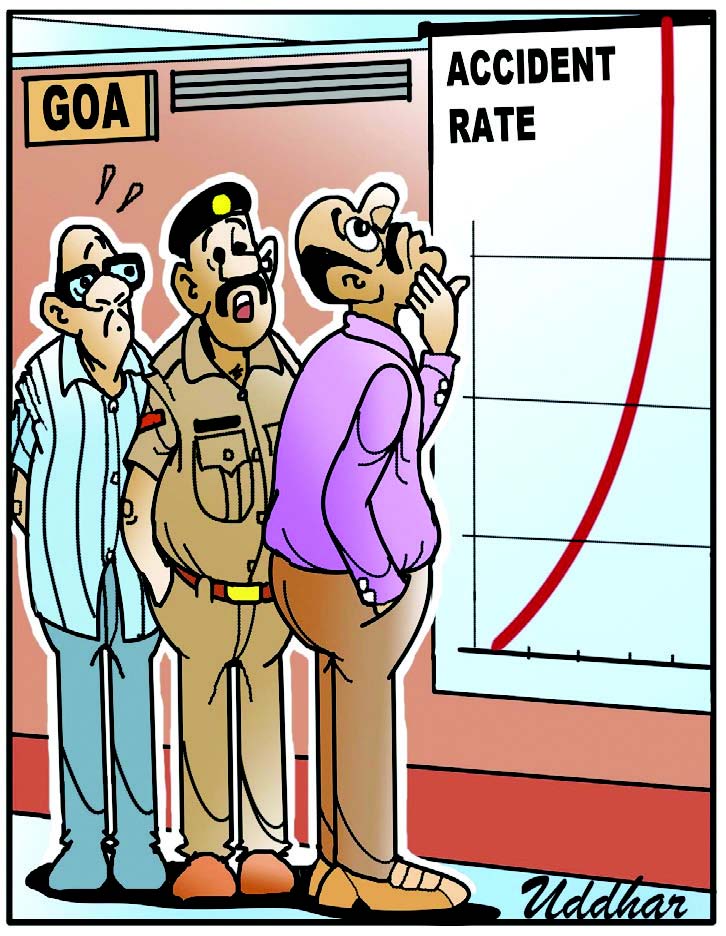
Cleofato Almeida Coutinho
The health caravan has rolled back in Margao. There was always suspicion over the way the new south Goa district hospital progressed since 2008. Even in times of medical crisis, infrastructure capable of housing 800 beds has not been put to use. The two floors of the building kept vacant has been a subject of speculations with even the local MLAs in the dark. As murmurs became shrill, the health minister claimed the GSIDC has not handed over the two floors. Whoever is responsible in keeping the two floors vacant at crisis time deserves to be prosecuted. It is criminal waste of a health resource at a time when it is needed the most.
The health minister’s revelation few days back that a private medical college is planned as per the guidelines of Niti Aayog has only confirmed the fears. We believed Coronavirus taught us certain lessons and our Covid-19 misery would be a game changer. It is the public health system that battled the corona-combat, despite all its failures. It was expected that the government would ramp up the public health system particularly the infectious diseases sector.
The central government has been spending little on health. Their emphasis is in health insurance schemes strengthening the economics of the insurance sector. The scheme of public private partnership (PPP) for setting up of medical colleges as envisaged Niti Aayog has already started a debate over attaching of district hospitals to medical colleges. The debate over whether that would lead to privatization of government district hospitals is not over. Covid crisis has suppressed that debate. In the world’s most credible medical journal ‘Lancet’, experts warn that Government’s proposal to privatize secondary care system will seriously harm the health system.
Under the Niti Aayog Model, a private party shall design, finance, operate and maintain the medical college and also upgrade, operate and maintain the associated district hospital with a minimum annual student intake of 150 seats. The scheme to link new and/or existing private medical colleges with functional district hospitals through PPP which envisages providing of medical care services to the category of patients what are called ‘market beds’, other than free patients on ‘regulated beds’ with the private party having a right to collect, appropriate and demand hospital charges from ‘market beds’ patients. The ‘free beds’ patient could be covered under PM-JAY or other state insurance schemes. So the free patients could also be taken care of by the government.
Under the scheme all assets of existing district hospitals will be leased for a minimum of 60 years, while the government will continue to pay salaries of doctors, nurses and support staff and also finance the up- gradation of these hospitals. So in Goa the private party could get over Rs 200 crores infrastructure for a song while government continues to bleed. The government is also to provide land on lease for 99 years at subsidized rate of rent of “8% of the circle rate of land”. A time- line of 60 years mean for nearly two generations, the hospital will slip out our hands, with the citizens at the mercy of corporates.
The Niti Aayog model is for non-communicable diseases. The havoc that communicable diseases can play on an unprepared society has been demonstrated by the Corona invasion. At one time there was a chest diseases hospital at Tambddi Mati, a TB sanatorium at Monte Hill and a leprosy hospital at Macazana. For over 50 years we have not created any such facility for infectious diseases. Earlier, we were told private hospitals in Goa cannot take Covid-19 patients as the hospitals are not designed for that. Time has come to redesign our hospitals with communicable diseases wings which can be used as normal hospitals in normal times. Every district must have such a wings and large private hospitals must create such space. What a great opportunity we have to create such a space, if 500 beds are enough to cater to the needs of south Goa!
A departure in public health policy of such momentous nature cannot be permitted to be taken behind closed doors. The local MLAs have publicly opposed such a move. The silence of other South Goa MLAs is deafening. The CM has said nothing in the matter. The health minister’s announcement must be scrutinized. A thorough debate whether letting corporate entity run hospital would be beneficial to Goa or fatal to the health system is required. The Niti Aayog’s proposal claims international best practices as also PPP arrangements in Karnataka and Gujarat. What is the experience of such partnerships in Karnataka, Gujarat and Delhi? The Niti Aayog has not learnt any lessons from the earlier PPP experiments. In Delhi land was provided free to get poor patients treated free. What’s the state of that scheme? In Raichur a college set up to cater to the poor of Gulbarga division, failed in it’s primary task even after ten years. Business groups always resisted regulation business interests ruled over health concerns. The Gujarat Adani Institute of Medical sciences is another business model. Management and NRIs seats bring in rich dividends for the investor. What Gujarat got return on it’s investment could be a case study?
Even if after a through scrutiny of the Niti Aayog scheme, if Goa opts to link the south Goa district hospital to a medical college, why the two floors are kept vacant? After all, more hospital beds get more medical seats. Even under the scheme, the building of the medical college is the responsibility of the private party and a functional hospital is only to be linked. The Government is not liable to provide the college infrastructure. But who knows, what considerations decide health policy?
(The writer is a practicing advocate, senior faculty in law and political analyst)
